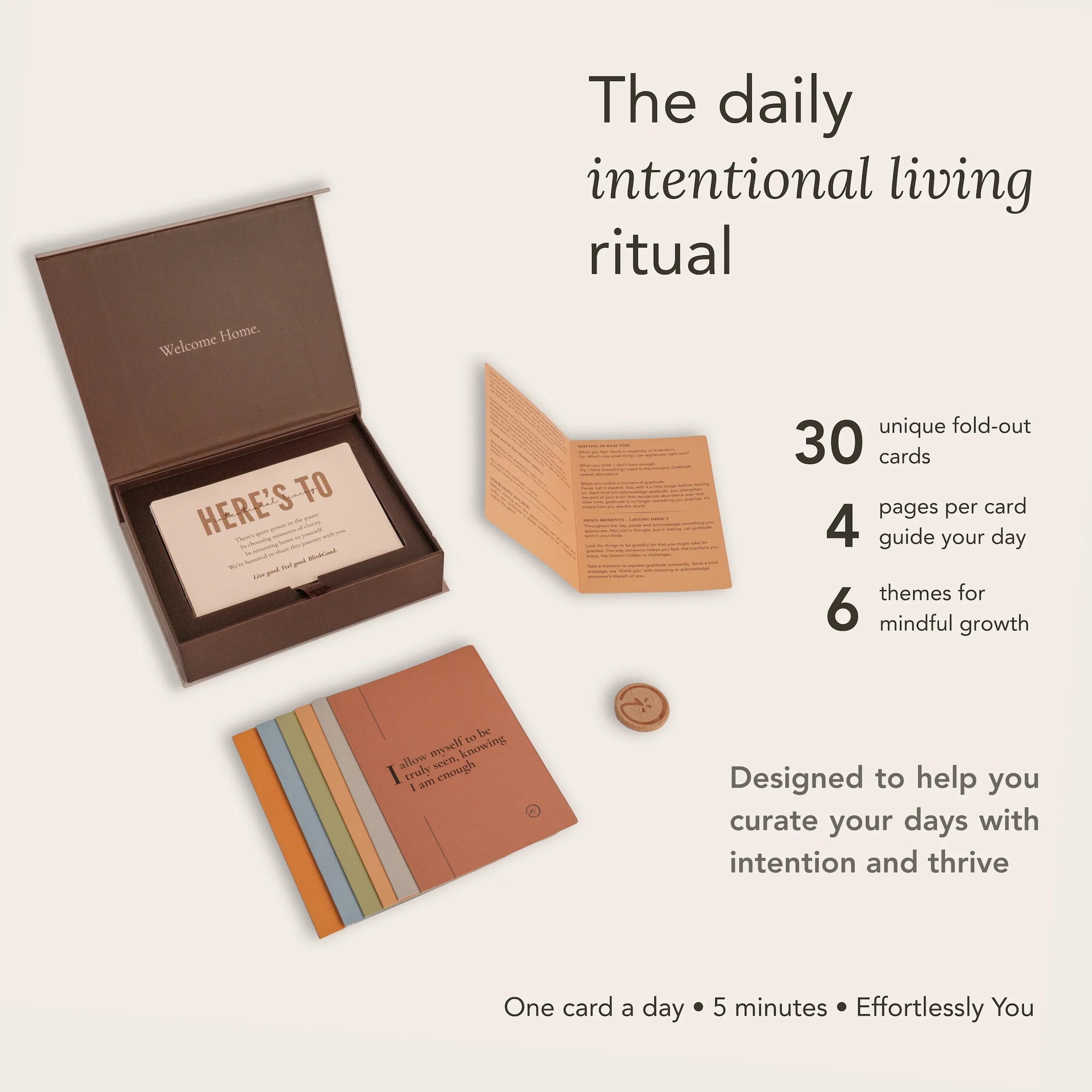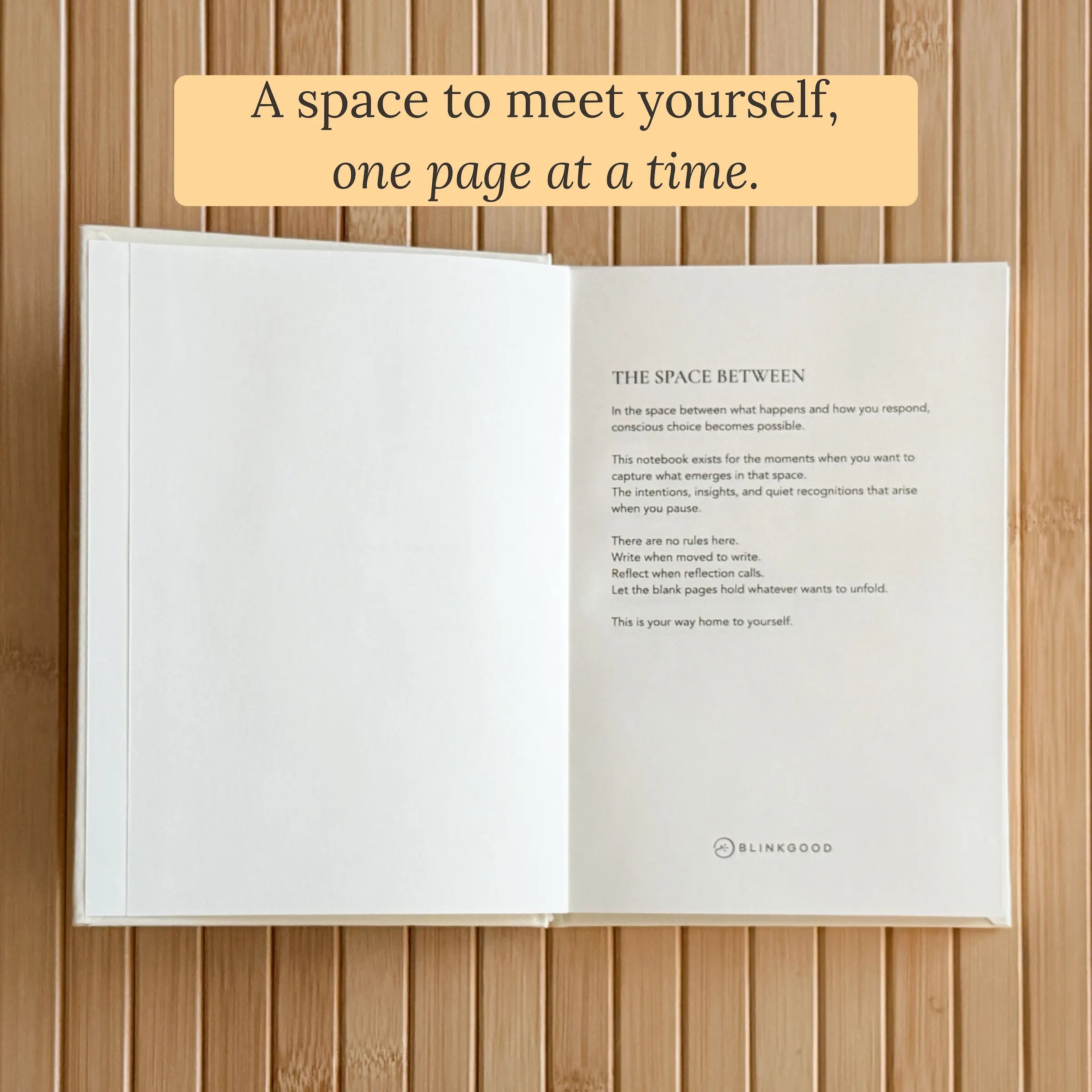Imperfect Mindfulness™: Self-Compassionate Presence for Real Life
Presence without pressure. Practice without perfection.
Imperfect Mindfulness™ is BlinkGood's approach to intentional living that removes performance pressure from presence. It's not about getting mindfulness "right", it's about feeling more like yourself, even in the beautiful mess of real life.
We don't wait for the perfect moment. We meet the real one.
Rather than demanding silence, stillness, or a clear mind, the goal of Imperfect Mindfulness is to work with your reality, not an idealized version of it. The goal of Imperfect Mindfulness™ is to help turn ordinary moments into opportunities for authentic self-connection through intentional living. To take away the pressure of a promised outcome.
The mindfulness paradox shows up most clearly when we feel like we’re ‘failing’ at being mindful. If mindfulness becomes another performance goal, it loses its essence. Presence counts even when it’s messy, distracted, or interrupted — that’s where its honesty, and its strength, truly live.
The Core Elements of Compassion-Based Mindfulness
Self-Compassion First
Built on the foundation that mindfulness without self-compassion creates another form of striving. Kind awareness replaces perfect focus as the core practice. Your wandering mind isn't failing, it's simply being natural. It recognizes that sustainable presence comes through kindness and recognizing our reality, not discipline.
Process Over Performance
Shifts success from "how calm did I get?" to "did I show up?" Celebrates each moment of noticing, even noticing that you're distracted as the practice itself. No right way to feel, just honest awareness. Gamified apps track streaks tend to bake performance pressure on the practice itself.
Messy is Welcome
Embraces daily fluctuations, wandering thoughts, and real-life interruptions as part of the practice. No need to create perfect conditions, life as it is becomes the perfect training ground.
How Imperfect Mindfulness™ Works
Intention (Without Pressure)
Begin with a gentle invitation to awareness, not a demand for focus. Set an intention to notice your experience with kindness, whatever it contains.
Connection (As You Are)
Embrace your present moment exactly as it is. Messy, distracted, happy, or calm. No need to change anything through Functional Mindfulness principles. Simply acknowledge what's here with self-compassion, supporting your intentional living journey.
Action (Tiny & Kind)
Take one small act of awareness like noticing your breath or feeling your feet on the ground without expecting any particular outcome.
Integration
Acknowledge whatever arose during your practice without judgment. Every moment counts.
Integration with BlinkGood Ecosystem
Within Intentional Living: Provides the self-compassionate foundation needed for sustainable intentional living practice
With Functional Mindfulness: While Functional Mindfulness focuses on practical integration, Imperfect Mindfulness™ addresses the self-compassion needed for any practice
Experience Imperfect Mindfulness™ in a Whole New Way
The Blink Deck™ embodies Imperfect Mindfulness™ in practice—a complete daily system built on The Blink Method™:
- 30 unique intentions across six pathways (repeat what lands, skip what doesn't)
- Four-phase daily practice that moves from morning intention to evening integration
- No streaks, no badges, no performance tracking
- Physical cards that work with or without writing
- Honest guidance for real moments, not ideal ones
Our goal is to make mindfulness accessible to everyone. Even those who think they're "bad at meditating." One imperfect moment at a time.
Frequently Asked Questions About Imperfect Mindfulness™
What is Imperfect Mindfulness?
Imperfect Mindfulness™ is a pressure-free approach to presence that removes performance pressure from mindfulness practice. It embraces self-compassion, celebrates showing up as you are, and recognizes that mindfulness isn't about achieving a perfect state but about meeting yourself with kindness exactly where you are.
Why do I feel like I'm "bad at mindfulness"?
This common feeling stems from mindfulness being misrepresented as a performance skill rather than a way of relating to your experience. Imperfect Mindfulness™ removes these unrealistic expectations. There is no bad mindfulness session. Everyday is different. Everyone is different.
Related Glossary Terms
Functional Mindfulness – Practical presence for busy lives
Imperfect Mindfulness isn't about getting it right. It's about showing up as you are. One imperfect moment at a time.
Begin your Journey





